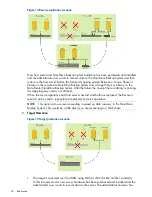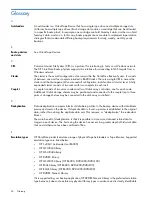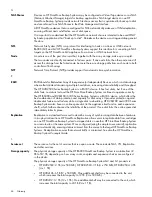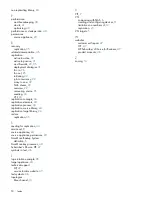
1.
Host backs up to a Non Replicating NAS share on the Source Appliance.
2.
Host maps to the NAS share on the HP StoreOnce Backup System and uses a file management
application (such as Windows Explorer) to locate files and copy them to a USB disk attached
to the host.
3.
The USB disk is shipped to the Data Center.
4.
A new share is created on the HP StoreOnce Backup System (using the Web Management
Interface).
5.
This can then be mapped to and the files from the USB disk copied into that share.
6.
Normal replication across the WAN can now take place with only new or changed data
needing to be replicated.
Figure 13 Seeding initial data (NAS only)
IMPORTANT:
If replication needs to take place through a firewall, the network administrator will
need to open (TCP) ports 9387 (Command protocol) and 9388 (Data protocol) to allow the
replication traffic to pass to and from the HP StoreOnce Backup Systems. If necessary and the
D2Ds conflict with another device on the network, these ports can be changed from the defaults
when you create the replication pairing or from the Local Appliance's General Settings page.
Recovering a Source Appliance
NOTE:
During a replication recovery, when a source share or library is getting data back from
the target, both sides will be read only. You cannot write to the source device whilst it is recovering.
The following basic models recover data using StoreOnce Backup Systems and, within these, there
are sub-models depending on the state from which the user is recovering.
In the following scenario, a disaster has occurred in the remote site resulting in the loss of both the
host servers and the StoreOnce Backup system.
1.
Reverse Replication
Recovering a Source Appliance
35
















































